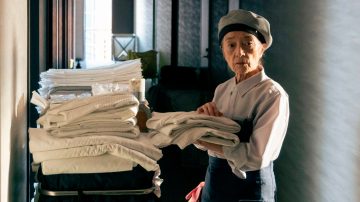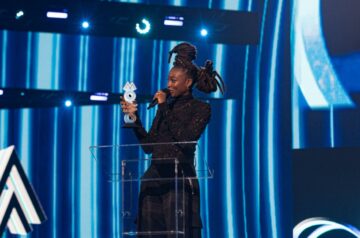
Jamie’s work has great depth and meaning, but he doesn’t want it to seem that way. The simplicity of photography – in its primitive point-and-shoot form – is what drew him to the art form and you can feel that in his current work. It’s accessible and engaging, quick to enjoy on a rudimental level, no matter what level of knowledge or context you have. However given time and thought, it becomes a deeply profound experience, one that has a lasting, meaningful impact.
It’s accessible and engaging, quick to enjoy on a rudimental level, no matter what level of knowledge or context you have.
Folly is perhaps his best embodiment of this yet. It’s multifaceted; ostensibly about ex-prisoners, while also experimenting with storytelling techniques and offering a unique insight into the British landscape. The end product being an unassuming window into the experience of being in and then leaving prison. We spoke to Jamie about his most recent body of work, Folly.
What led you to Folly, Jamie?
I was working on the photos that I’d made whilst travelling on a warship with the Royal Navy for another one of my projects, Albatross. This is a big part of photography for me, the editing and sequencing. I find it paramount to give yourself a bit of time after you finish shooting. And when I say a bit of time I mean months, maybe even years. I like to figure out the story through the pictures that are actually there in front of you, rather than what you thought the story was at the time.
I like to figure out the story through the pictures that are actually there in front of you, rather than what you thought the story was at the time.
So I was doing that, but I also wanted to produce something new. With Albatross, I was interested with the notion of institutions and how they impact us. In my MA I explored the idea of the criminalist spectacle, so focusing on prisons and prisoners next felt an organic next step.
I had decided I wanted to shoot in a prison, but I knew this was going to take a while to organise. So while trying to arrange this, I reached out to ex-prisoners under the premise of having a chat and maybe portraiting them. I thought having spoken to ex-prisoners, if I eventually got into a prison I’d have this really sound idea of the experience, seeing it as research.
Time passed and I wasn’t getting any closer to meaningful access to prison. I could have gone in for a day and photographed themselves and had an interview with someone, but something about that didn’t quite sit right with me.
It was then I realised just how much I was getting out of these conversations with the people who had been in prison for generally quite a long time, a lot of them really quite institutionalised. And their portraits were really working for me. So I started making these small sequences that were somehow influenced by what they said to me, both literally and in a less tangible way. I liked the idea of portraits alongside other images that somehow referenced various parts of the conversations subjectively. So I ran with that.
Why is Folly important to you?
I wouldn’t like to be blunt and say that it is important. Fundamentally it isn’t, that’s why it’s named Folly. It’s a documentary on ex-prisoners about prison experience that has zero pictures of prisons and zero context of what their stories were. It’s silly, it’s a folly. The name folly also comes from a reference to follies – a piece of architecture that has no purpose.
It’s a documentary on ex-prisoners about prison experience that has zero pictures of prisons and zero context of what their stories were.
It looks like it could be important, but actually it’s an aesthetic endeavour. Accepting that for me is quite important. I’m not a researcher, like my work here, as much as I do have research, it was for me to make images. And for me personally to understand what these guys have gone through.
How did you get to know the subjects’ story?
I met up with them with no real push on my behalf to take the portraits, I just wanted to meet and chat and then if that happened, it happened. Meeting a particular gentleman named Saul turned into one of the defining moments for me. We spent a good two hours chatting to each other, had a couple of coffees. We then spent another ninety minutes taking photos as well. He was important because he told stories that were natural, funny, and engaging. There was no element of sadness. This helped me fully understand what Folly could and was going to be.
Can you expand on the project’s narrative?
In photography there’s a term – a fractured narrative. It definitely resides in that place. Each individual photo is sporadic in where it’s from it’s doesn’t follow location as such. The portraits have a consistent context of that these are guys that have spent time in prison. But beyond that, the narrative operates in a place that is influenced by the conversations, the subjective.
What drew you to photography?
I’d say what drew me to photography was how simple it is on the face of it. I felt like it was accessible. It was something someone who wasn’t naturally talented at drawing or music could do.
Now I like photography on multiple levels. I like it at a surface level. I like looking at pictures and I like playing with aesthetics. I love storytelling and I love films. So yeah, it all comes to a head in photography for me. Storytelling through pictures is very different. I enjoy the individual image, but then also how images play off against other images.
What are some stories you want to tell in the future?
I’m interested in continuing the theme of institutions, maybe a body of work in a school. Folly ended up being slightly melancholic. In the future I want to do something a bit more playful. I’m feeling more confident with myself when making pictures now, so that I can play around with different things like being afraid to play around with differing emotions before when you’re getting people to sit for portraits. I don’t feel that much now, so I really want to try and expand my photographic vocabulary in order for me to tell more complex stories.
Is there anything left unsaid regarding Folly?
A lot is left unsaid with Folly. I don’t tell all the stories that I was told. I feel holding back on giving 100% of the context is the best way to let people enjoy the pictures for what they are, because then people bring their own thoughts, they bring their own context.
A lot is left unsaid with Folly. I don’t tell all the stories that I was told.
I would like people – if they’re looking through the book, or a portfolio of prints, or even just the images on my website – to feel like they’re going on the same journey that these guys have gone on; a slow journey of figuring out who they are, and what life might mean and why we make those mistakes we do. Why it’s okay to make mistakes and come to terms with them.




